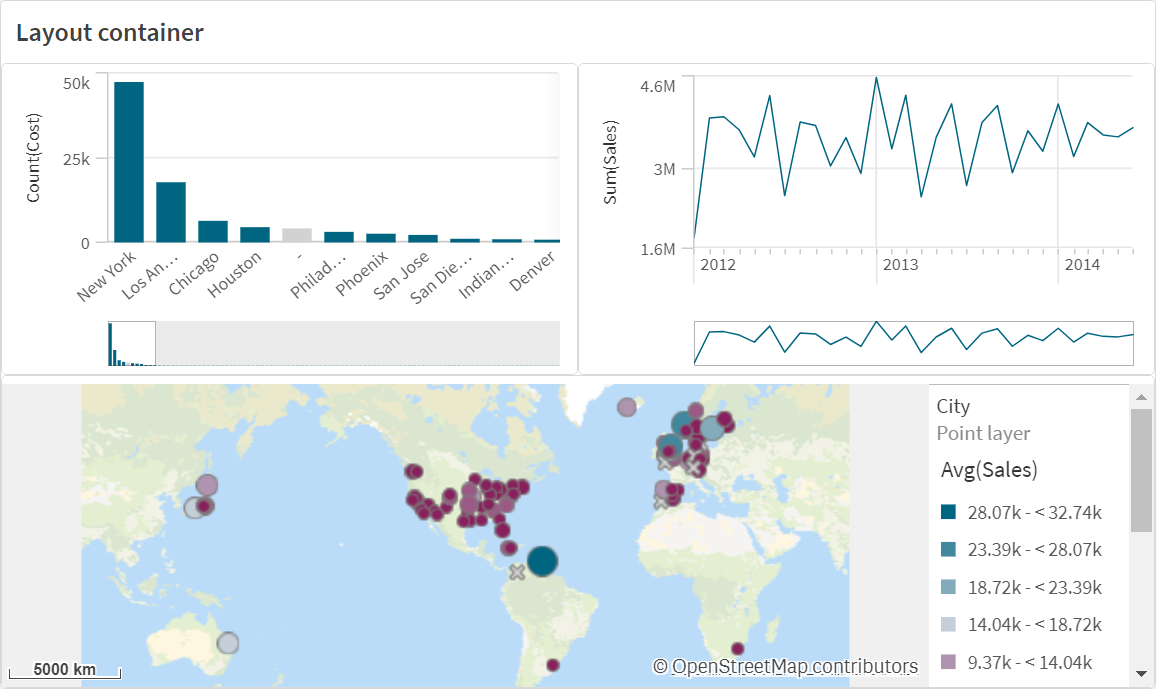Layout container
Layout containers (Layout container) allow you to add visualizations in a limited space. You can also show or hide the visualizations inside the layout container based on conditions.
Layout container

A layout container can hold a range of visualizations while occupying a small amount of space on a sheet. When expanded to full sheet, each chart expands as well.

When to use the layout container
The layout container is useful when you want to build a custom display containing multiple charts as a single unit. Unlike the container, which uses tabs to cycle through charts, the layout container is a space where you are free to customize your own layout of the charts in the layout container. As the layout container offers sheet-like arrangement of visualizations, you can functionally store multiple sheets within a sheet that can be expanded for more detail.
You can place visualizations on top of one another. You can use conditions in the layout container to control which visualizations display. For example, you could show visualizations based on:
- Which user is accessing the chart.
- The value of a variable.
As a best practice, be aware the more visualizations that are added to a container, the longer it can take to display visualizations. Too may objects in a layout container might overwhelm the user and make the app slower to render visualizations.
Limitations
Layout containers have the following limitations:
- You cannot create a chart inside a layout container by dropping measures or dimensions on the container.
- You cannot add a tab container, trellis container, or layout container inside a layout container.
- Keyboard shortcuts are not supported for copying and pasting charts in a layout container.
-
The visualization exploration menu is not available for charts that are located inside a tab container, layout container, or legacy container object.
